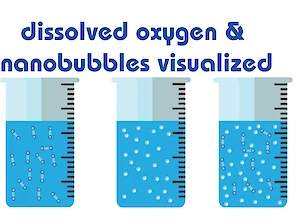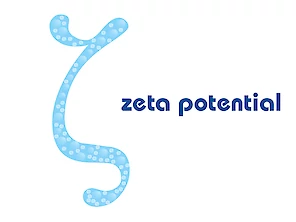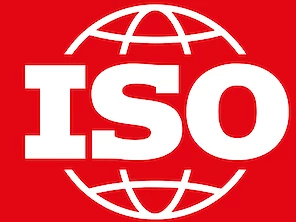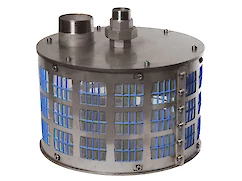Published: Monday, 10 July 2023
Modified: Friday, 4 August 2023
Ozone Nanobubbles: A Breakthrough Technology for Advanced Water Treatment
Introduction

Ozone nanobubbles are an attractive area of research and technology in the field of water purification, treatment, and disinfection. Ozone nanobubbles are extremely small bubbles with diameters in the nanometer range (less than 100 nm), which are composed of ozone gas.
In recent years, these ozone-based small bubbles have gained attention for their unique properties and potential applications in various industries.
Ozone (O3) is a strong and powerful oxidizing agent and sterilizer known for its ability to inactivate bacteria, viruses, and other infectious agents. Using Ozone as a disinfectant in water treatment processes, has a challenge in providing ozone effectively and efficiently throughout the water. However, nanobubbles technology solves these problems. When infusing ozone into water under specific conditions, it can form ozone nanobubbles, which exhibit distinct advantages over conventional ozone treatment methods. Because the key advantage of ozone nanobubbles is their long life in water. Due to their small size and high surface area, these bubbles can remain suspended in water for extended periods of time, allowing for more contact time between ozone and pollutants. This contact time increases the efficiency of the purification and makes the purification process more complete.
Furthermore, ozone nanobubbles have a higher mass transfer rate than larger bubbles or dissolved ozone. So, transferring more ozone to the water increases the disinfection efficiency. Also, the small size of the bubbles allows them to penetrate small crevices and hard-to-reach areas, which helps to purify water more thoroughly and efficiently.
In addition to their effectiveness, ozone nanobubbles are also a safe and environmentally friendly technology. Unlike traditional chemical treatment methods, ozone nanobubbles do not produce harmful byproducts or leave behind toxic residues. Additionally, ozone gas is a natural and abundant resource that is easily generated on-site, making it a cost-effective solution for a wide range of applications.
Application of ozone nanobubbles
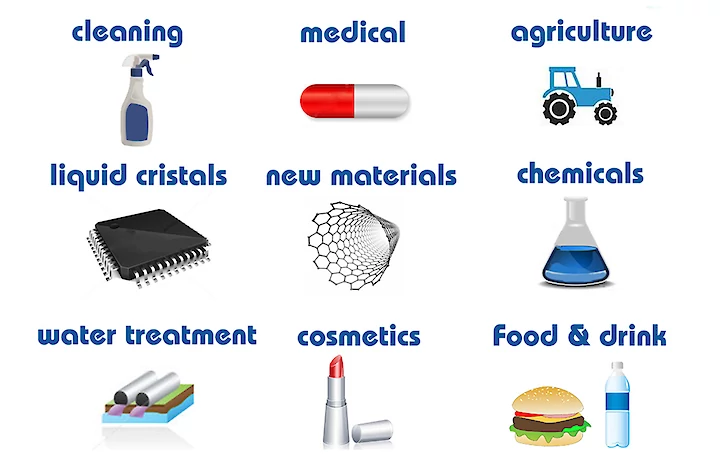
Ozone nanobubbles have wide applications in various industries, including water treatment plants, swimming pools, food and beverage processing, agriculture, and aquaculture (Fig)
In water treatment plants, ozone nanobubbles are used to eliminate organic pollution, kill, and inactivate microorganisms, oxidize organic substances, and reduce odor and color in water. Also, these bubbles penetrate various parts of the water system and effectively encounter pollutants. The food and beverage industry are using ozone nanobubbles as an effective disinfection method. They can be used to disinfect fruits, vegetables, meat, and other products. Also, ozone nanobubbles can be effective in maintaining the quality and extending shelf life of products.
Additionally, In the field of agriculture and aquaculture, application of ozone nanobubbles can improve water quality and enhance the growth and health of aquatic organisms and agricultural products. These bubbles are used as a disinfection method in aquatic farms including fish and shrimp production. Ozone nanobubbles also are used in wastewater treatment and disinfection of hospitals, kitchens, and hotels.
Another application field of Ozone nanobubbles is for groundwater remediation by injecting them into contaminated groundwater. The ozone in the nanobubbles reacts with and breaks down organic contaminants, such as pesticides and petroleum products, into harmless byproducts. This process is known as oxidation. Ozone nanobubbles are also used to disinfect groundwater by killing bacteria and other microorganisms. Overall, the use of ozone nanobubbles can be an effective and sustainable method for groundwater remediation.
Advanced Oxidation Processes
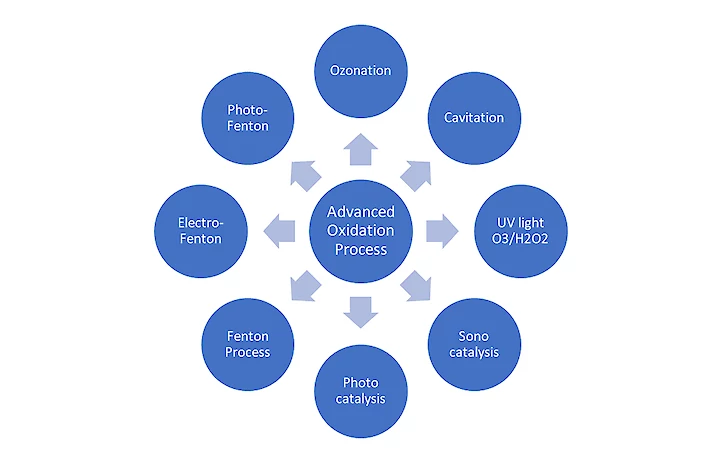
Advanced Oxidation Processes (AOPs) is one of the applied methods in the water and wastewater treatment industry, which are used to remove organic and inorganic pollutants from water and wastewater. AOPs work by generating highly reactive chemical species, such as hydroxyl radicals or ozone, which can rapidly oxidize and break down organic and inorganic contaminants into harmless byproducts. One of the commonly used AOPs includes ozonation. However, ozonation is often used in combination with other treatment methods such as UV to achieve effective removal of persistent contaminants.
As mentioned above, traditional ozone gas is not able to penetrate effectively and efficiently throughout the water. On the other hand, one of the key advantages of ozone nanobubbles over traditional ozone gas treatment is their increased surface area. Because the ozone gas is dispersed into the liquid in the form of tiny bubbles, there is a much greater surface area for the gas to encounter contaminants. Thus, ozone nanobubbles are much more effective at AOPs than traditional ozone gas treatment methods.
Acniti offers high standard Oxiti ozone generator that generates 5-gram ozone per hour. All Acniti products, including the Oxiti ozone generator, are made of high-quality materials.
Conclusion
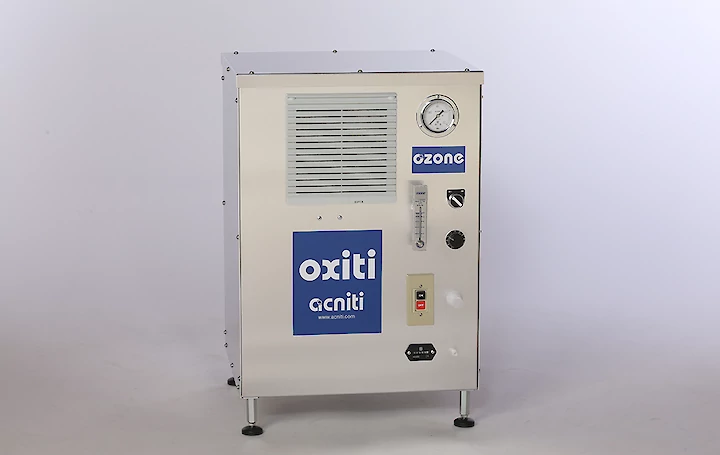
Nanobubbles-based methods including ozone nanobubbles, in recent years, have been widely used for purification of water, wastewater, food and beverage processing, agriculture, and aquaculture.
Most important benefits of nanobubbles ozone are:
- Enhanced ozone solubility: Ozone nanobubbles have a large surface area due to their large numbers and ridiculously small size, which makes ozone gas more efficiently dissolved in liquids. This improves the transport and effectiveness of ozone in applications such as water treatment and disinfection.
- Increased reaction rate: The small size of ozone nanobubbles increases the mass transfer rate, resulting in a much higher reaction rate. This can lead to faster and more effective oxidation or disinfection processes.
- Stability: Ozone nanobubbles can be more stable than traditional ozone bubbles.
- Penetration: Due to their small size, ozone nanobubbles can penetrate smaller spaces. This feature allows them to be used in various applications such as cleaning and disinfection.
- Eco-friendly: Ozone is a powerful oxidant that can replace or reduce the need for traditional chemical disinfectants or cleaners. Ozone nanobubbles offer an environmentally friendly solution, as ozone breaks down into oxygen, leaving no harmful compounds.
- Multiple applications: Ozone nanobubbles are used in various industries such as water treatment, wastewater treatment, food processing, agriculture, pharmaceuticals, etc.
